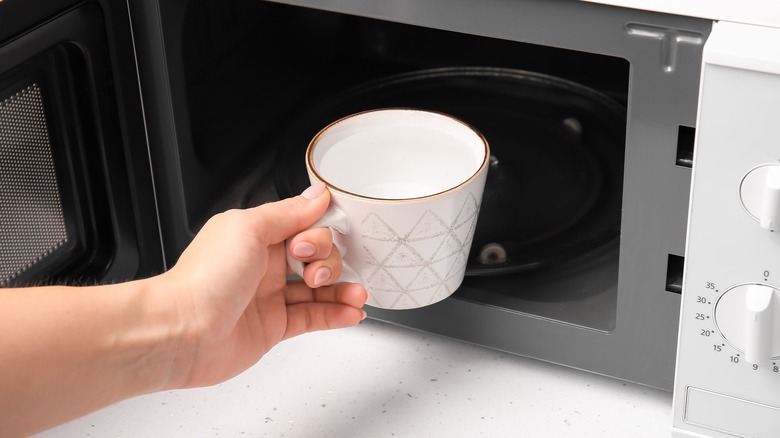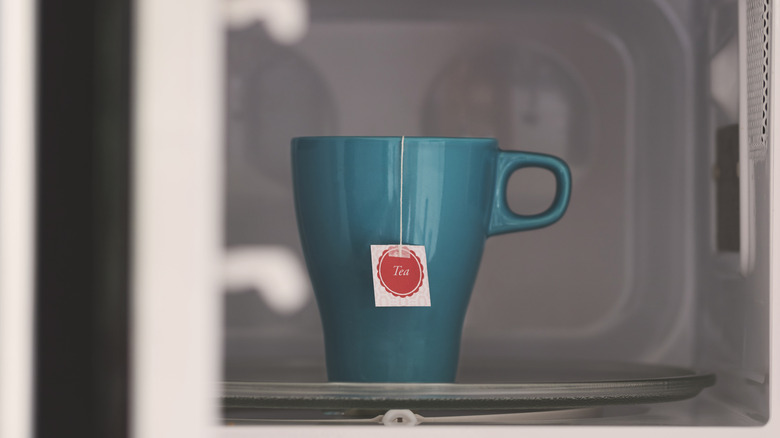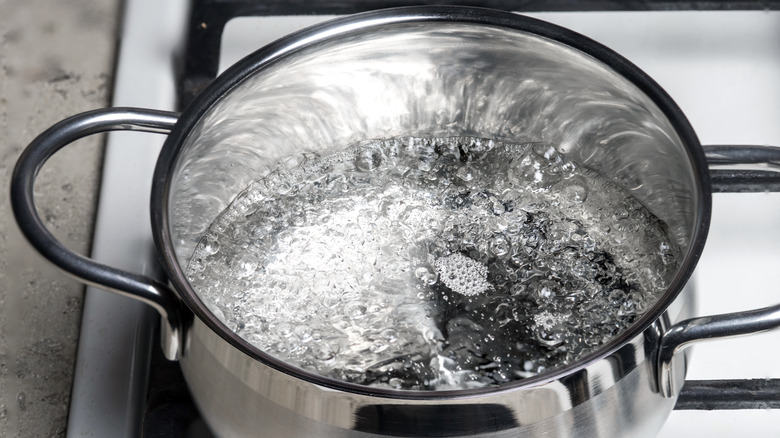The Biggest Pitfall To Keep In Mind While Microwaving Water
It's hard to imagine just how we warmed things before the microwave was invented — painstakingly stirring and whisking things on the stove! Thanks to a microwave, anything can be heated in a matter of seconds, including plain water. But just because a microwave makes it quick and easy to boil water doesn't mean that it's always the safest thing to do: It can also superheat in there and explode just as quickly.
A kettle or a stove applies heat on water from one direction, which forms a current that constantly churns the liquid up and down, allowing it to warm evenly until it boils. On the flip side, microwaves have a bad rep for throwing heat at food and drinks from all directions, warming them unevenly. Without the churning that happens in a kettle or a stove, a microwave may heat water in some spots more than others. This causes hot spots to form that can explode as soon as the water suddenly moves.
Additionally, microwaved water may heat without ever bubbling, which means that it could reach temperatures above its boiling point quickly and overheat. When you remove the water from the microwave, the abrupt movement in the still water and sudden temperature change can create an explosion of steaming water, which can cause scalding. This doesn't just apply to water either: Things like tea, coffee, tomato sauce, and even hard-boiled eggs can explode in the microwave.
Tips to microwave water safely
When sticking your mug into the microwave, you need to find a way to allow the water to bubble inside as it heats so that it doesn't explode afterward. Perhaps surprisingly, this is quite possible.
One great way to do this is by adding a microwave-safe spoon or wooden stir-stick to the water when you heat it. This will break the still surface of the water and create enough tension for bubbles to form. It's also a good idea to use vessels that are worn out when microwaving water. The scratches from wear and tear on these will make the surface just craggy enough for bubbles to form and prevent the water from superheating. Water is also more susceptible to superheating when it is microwaved for longer than necessary. A good way to prevent this is to microwave water in small intervals and stir it in between each one to distribute the heat evenly.
How to boil water faster without a microwave
While there are precautions that you can take to prevent microwaved water from exploding, there are also other ways to boil water just as easily and effectively if you'd rather not take the risk. Using a kettle is an excellent alternative — its sole purpose is to heat water after all. But if you don't happen to have a kettle or need to use the ol' stovetop method for any reason, there are ways to hasten the boiling there too.
For one, don't use more water than you need to — the smaller the amount of water, the faster it will boil. Use a wide pot or a pan that spreads water in a thinner layer as this will help it boil quicker. Keeping the vessel covered with a lid will help too since it will essentially trap all the heat inside. If you're pressed for time, using just these simple few tricks will help water boil on a stove far more quickly and effectively when you don't want to use a microwave.



